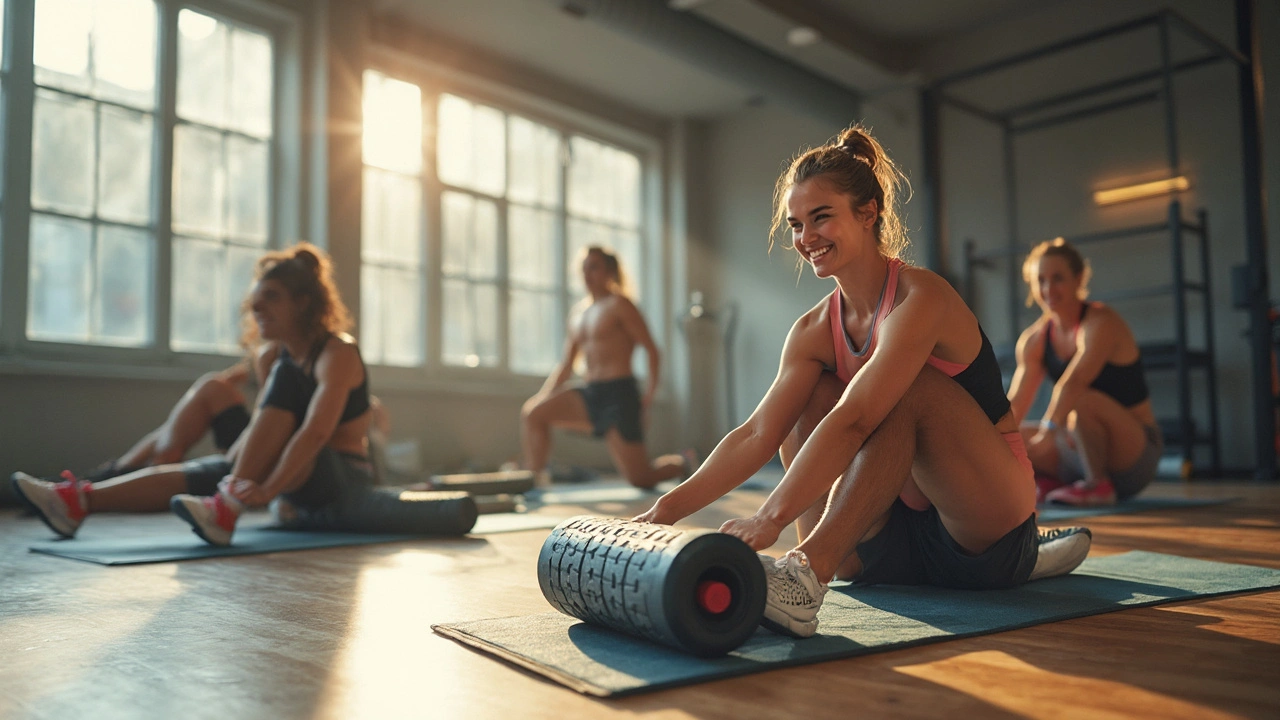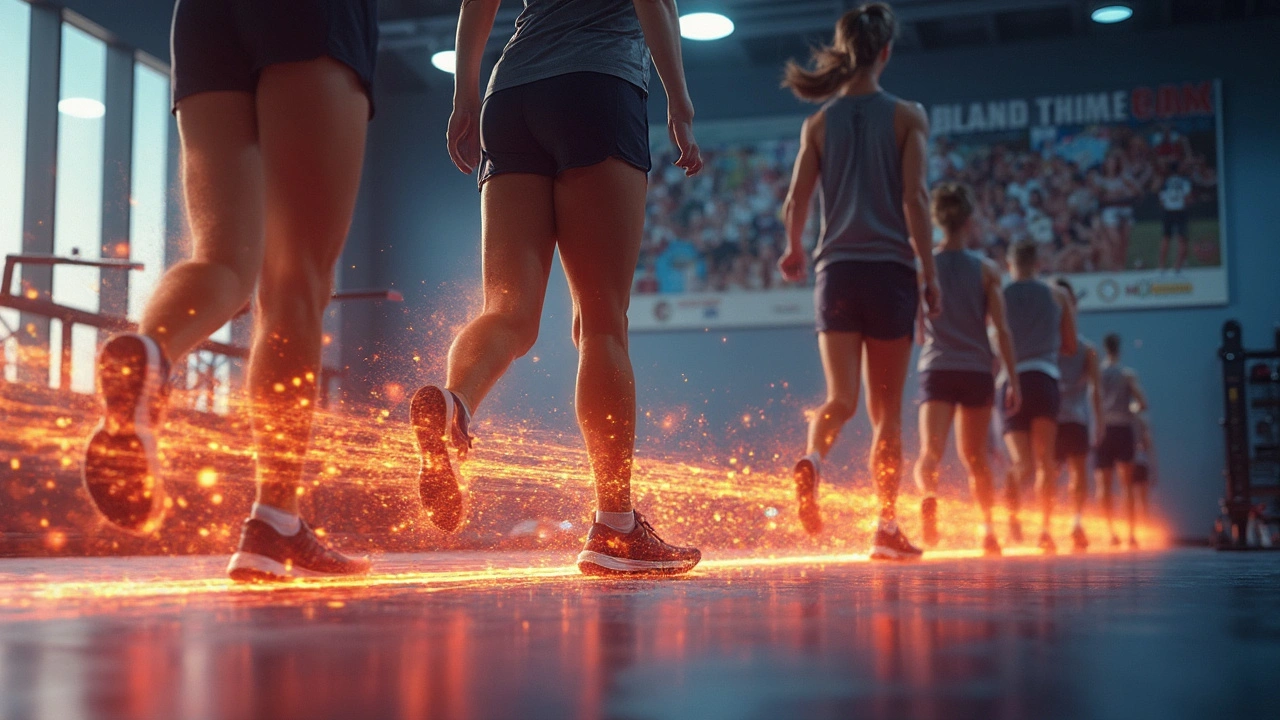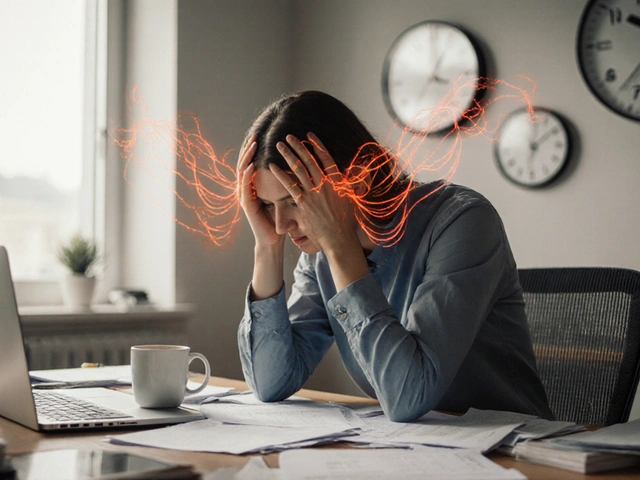
Bruises, muscle knots, and soreness can show up even if you aren't an elite athlete. Ever finished a workout and felt like your body was sending you angry emails? Sports massage isn’t just for Olympians or those marathon fanatics down on the Esplanade. It’s quietly become a secret weapon for anyone looking after their body—gym-goers, weekend warriors, busy parents, and yes, the twenty-something glued to a laptop all week. But what actually happens during a sports massage? Why is everyone from local footy teams to AFL pros raving about it?
Why Sports Massage Works: Science, Pressure, and Real Recovery
If you’ve ever seen a physio or rolled around on a foam roller wishing it would just do the work for you, you're halfway there. Sports massage targets soft tissue—the muscles, ligaments, and tendons you rely on for pretty much any movement. Therapists use anything from gentle strokes to firm pressure, based on what your body needs. Now, the magic mostly happens under the skin, so let’s peel things back.
When therapists use their hands, elbows, or even knuckles, they boost blood flow to tired muscles. This simple act kickstarts your body’s built-in fixing system. Blood carries oxygen and nutrients, sweeping away waste like lactic acid. The cool news? A study from the University of Illinois in 2020 showed that just one session of sports massage after a tough workout increases muscle blood flow by up to 30%. That's why it feels like someone turned the lights back on in your legs after a long run.
But it’s about more than just blood. The pressure and stretching from massage help relax tight fascia—the spider web-like tissue surrounding every muscle. When fascia’s stiff, movement feels sluggish, and injuries can creep in. Regular massage keeps things flexible, lowering the risk of strains or pulled muscles. And no, you don’t need a deep-tissue session that makes you want to bite a pillow. Gentle can work wonders too, and actually, therapists often mix techniques in a single session.
Let’s talk headaches, sore necks, or that stubborn sciatic pain that flares up when you least want it. Sports massage is well-known for easing these aches. There’s even some local research from Curtin University in Western Australia pointing out that monthly targeted massage reduces the severity and frequency of tension headaches by nearly 50% after eight weeks. That’s not just placebo—real nerves, muscles, and tension are getting dialled down.
| Therapeutic Benefit | What Science Says |
|---|---|
| Faster recovery | Massage post workout improves muscle blood flow by ~30% |
| Injury prevention | Maintains flexibility and breaks down adhesions in fascia |
| Pain relief | Halves severity/frequency of muscle-based pain (Curtin University, 2022) |
| Stress reduction | Cortisol drops and endorphins rise after sessions |
That brings us to pain relief, especially soft tissue pain. If you’ve dealt with DOMS (delayed onset muscle soreness), you know it feels like your muscles are auditioning for a zombie series. Sports massage won’t make the ache vanish overnight, but research shows it speeds up the process. The bonus? People who get regular sessions experience lower baseline pain levels even when they push their limits. For those on a training plan or just starting a new form of exercise (hello, F45 first-timers), this means less time sidelined and more time doing what you enjoy.

Unexpected Perks: Mind, Mood, and Beyond Muscle
Let’s clear up a common myth—sports massage isn’t only about fixing tired limbs. One of the best things? It hits right at the root of daily stress. Perth’s lifestyle is busy, and honestly, stress ties your body into knots whether you’re running marathons or just running after kids. A solid massage session can drop cortisol (that stress hormone) and help flood your brain with endorphins. People talk about the “massage high,” and it’s not just in their heads—it’s a full-body thing.
One thing I love about the practice is how it helps with sleep. Plenty of clients have told me they knock out for eight solid hours after a session. Scientists back it up, showing that massage activates your parasympathetic nervous system (that’s the “rest and digest” part of your brain). Sleep not coming easily? Try a late-afternoon sports massage. You’ll probably skip the Netflix binge and head straight for bed.
You know that feeling after a big project at work, when you can finally stop clenching your jaw? That’s where massage shines. It can snap you out of your stress-holding patterns. Regular sessions make you more aware of tension creeping in. You start spotting trouble before it builds—a missed stretch here, a twinge in your back there. Long-term, it sort of teaches your nervous system that it’s okay to drop the constant state of emergency.
Let’s talk about immunity for a sec. Ever notice how you’re more likely to catch a cold right after pushing yourself too hard? It’s not a coincidence. Sports massage helps balance the immune system by reducing inflammation and lowering stress hormones. A 2018 study from the University of Sydney showed that massage can bump up the activity of white blood cells. In plainer words: your body’s built-in security guards get a bonus.
One extra perk—mental clarity. Sounds odd, but after a focused session, plenty of people say their thinking feels sharper and their mood lifts. There’s a reason some Aussie businesses now offer onsite sports massage in the office. Staff are clearer, more productive... and less likely to be cranky by Friday.
Here’s a table breaking down common perks a bit further:
| Perk | How It Helps |
|---|---|
| Better sleep | Kicks in relaxation response, deeper rest |
| Mood boost | Endorphins up, anxiety down |
| Sharper focus | Mental fatigue drops after treatment |
| Fewer sick days | Immune markers go up (2018 Sydney study) |
| Body awareness | Spot and correct movement habits before injury |
Keep in mind, the benefits stack up when massage becomes part of your regular self-care, not just a quick fix after an injury. Even for those with chronic health conditions like arthritis, fibromyalgia, or persistent back pain, many find real, long-lasting relief—and it’s a whole lot safer than reaching for painkillers every few weeks.

Maximising Results: When, How, and What to Expect from Sports Massage
Don’t picture a spa with candles and whale songs; sports massage is tailored to results. Before you book, know what you want—faster recovery, pain relief, injury prevention, or just regular reset? Be clear with your therapist about what you do all day. Are you at a desk, chasing little ones, or training for City to Surf? The more they know, the better they can help.
First-timers might expect a bit of discomfort (that’s normal!). But the days of “no pain, no gain” are disappearing—today’s therapists focus on *effective* pressure, not just deep tissue work for the sake of it. If you ever feel genuine pain during a session, speak up straight away. Communication is king, always.
- sports massage once every 2 to 4 weeks is a good starting point for most people. Elite athletes might go more often, especially around competitions. If you’re dealing with an acute injury, your schedule might be tighter for a few weeks—always follow a qualified pro's advice.
Wondering how to hold onto that freshly-massaged feeling? Simple steps can keep the benefits going:
- Hydrate before and after your session. Your body flushes out waste more efficiently with water in your system.
- Move gently. Don’t go from the massage table to max-weight deadlifts. Give your body a day to adapt and respond.
- Use tools like foam rollers or massage balls between appointments for home-based muscle TLC.
- Stretch regularly—especially the spots your therapist focuses on.
- Listen to your body signals. If new pain pops up or something doesn’t feel right, chat with your masseuse.
People sometimes ask if sports massage is safe for everyone. For most, yes—but if you have certain medical conditions (like deep vein thrombosis, infectious skin issues, or severe osteoporosis), check with your doctor. Pregnant folks can absolutely get sports massage, but make sure your therapist is trained in prenatal techniques.
Prices vary—Perth clinics charge about $60-110 per session, with rebates if you’re with a health fund. And a hot tip? If you’re part of a local sports club or gym, you often get discounts with certain therapists, so it’s worth asking around.
Sports massage is as much about prevention as it is about fixing what’s already broken. With smart, regular sessions and honest communication, you’ll move better, hurt less, and probably stand a little taller at work come Monday morning.





